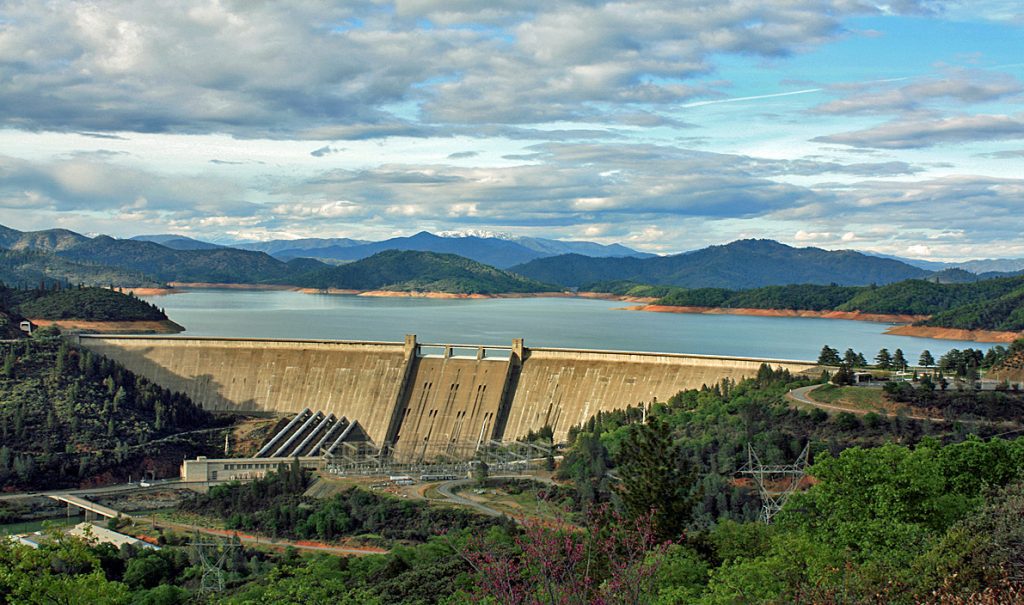Our family loves to learn about historical facts, personalities and locations. When we drove to Shasta County, we found all three. Francis “Frank” Crowe was a man who was made for a special time in history. When Mr. Crowe was born in Quebec, Canada, in 1882, there was no way to know how influential he would become to farmers in the Central Valley of California or to electric customers in California and other states as far east as North Dakota and as far south as Texas.
As the United States suffered through the Dust Bowl period and the Great Depression of the 1930s, President Franklin D. Roosevelt desperately pulled the country out of its doldrums. By signing Executive Order 7034 on May 6, 1935, the president commissioned the Works Progress Administration to oversee a series of major public road and construction projects that would put the country back to work and bring it out of the worst economic slump in its history.
While all this was happening in Washington DC, Frank Crowe quickly honed his skills as a civil engineer, gaining valuable experience and developing new techniques for pumping and delivering concrete. Crowe supervised the construction of two masterpieces: the Hoover Dam and the Shasta Dam. The Shasta Dam is the second largest concrete dam in the country and the one that transformed Northern California forever.
Melting snow from the Shasta mountain range would typically flood the Redding area, often leaving behind heavy destruction, so flood control was necessary for the population to survive. In contrast, the potentially fertile lands in central California were parched and thirsty for irrigation. Also, San Francisco was growing larger by the day and becoming more dependent on steady electrical power to keep the city lit.
Civil engineers explored many options for where to build the structure. For nearly two years, dynamite experts cleared and excavated millions of tons of rock before reaching solid bedrock. Crowe was given charge over nearly 5,000 brave and able-bodied workers and built Shasta Dam Village with dorms for single men and houses for men with families. He also built a recreation hall, a cafeteria and a hospital that was considered the finest in Northern California. The crews worked around the clock in three shifts and were transported back and forth to their workstations in a steady stream of vehicles.
Concrete placement began on July 8, 1940, and it continued for nearly five years. More than 12 million yards of gravel were gathered near the Sacramento River in downtown Redding and delivered by conveyor belt to stockpiles near the dam site. The Goodyear Tire Company manufactured the belt, the world’s longest belt at 9.6 miles long. Crowe designed a system of towers that were used to move concrete to nearly 17,000 block forms, each measuring 50 feet square and five feet high. Freshly mixed concrete was delivered to waiting crews using 8-cubic yard steel buckets suspended from a cableway system. As each block was filled with concrete, cooling pipes were added to help with the curing process. Grout was used to fill in the holes made by the water pipes, and construction on the next block began. There are thirteen hundred miles of these pipes left in the dam today.
Once the United States was thrust into action in World War II, Crowe’s builders worked overtime to speed up the construction. As a result of the dedication and hard work of thousands of workers, Shasta Power Plant was operational in 1944 and fully completed in 1945, twenty-six months ahead of schedule.
Shasta Dam stands 602 feet, more than three times as tall as Niagara Falls, and is 3,460 feet long and 883 feet thick at its base. There are more than 15 million tons of concrete in the dam, and its sheer weight is used to hold back the powerful waters of Lake Shasta, the largest man-made lake in the state.
The spillway is 487 feet high and releases water through 18 outlet valves. When Shasta Lake is full from rainfall, it measures 517 feet deep, with enough water being channeled through the system to irrigate the 500-mile stretch of land south to Bakersfield, where two-thirds of America’s food supply is grown. The dam also has five massive turbines deep inside its foundation capable of generating 676 megawatts of hydroelectricity, which produces enough power to light up the 15-state western power grid.
If you find yourselves in the Northern California area, make it a point to visit Shasta Dam. They offer guided tours throughout the year, and you’ll be awed by the incredible size and work that went into building the dam.


2 thoughts on “SHASTA DAM”
May I simply just say what a comfort to find someone who genuinely knows what they are talking about on the web. You actually understand how to bring a problem to light and make it important. More and more people really need to read this and understand this side of your story. I was surprised that youre not more popular given that you certainly possess the gift.
Hey there! I simply would like to offer you a big thumbs up for the excellent info you have here on this post. Ill be coming back to your site for more soon.
דירות דיסקרטיות בבאר שבע Gilbert Lardin